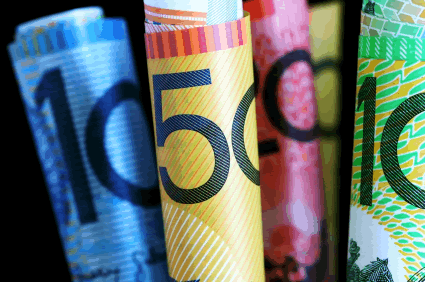Pound sterling vs Australian dollar: GBP/AUD Sinks as Outlook for Aus Economy Said to be Improving
- Written by: Gary Howes
The Aus dollar (AUD) has advanced against the pound sterling on Monday morning as an underwhelming UK PMI release combines with an improved view on the outlook for the Australian economy.
The pound sterling to Australian dollar exchange rate is trading lower on Monday morning; the GBP/AUD is quoted at:This is a live exchange rate and updates on refresh of your browser.
The uptrend in the pound sterling to Australian dollar exchange rate appears to have stopped for now; resistance at 1.9 was tested repeatedly through the end of January, but no break higher was experienced.
The outlook for this exchange rate is now one of consolidation; the longer-term uptrend remains intact but we will need to see better data releases out of the UK, and not misses like we have seen today, to drive the GBP/AUD above 1.9. Indeed, the outlook now suggests a deeper decline is on the cards as this technical forecast suggests.
Note: Our AUD quotes are taken from the wholesale spot markets. Your bank will charge a spread at their discretion when passing on a retail rate. However, an independent FX provider is so well placed on the market that they are able to deliver you up to 5% more currency. Please learn more here.
Job advertisements: Slowdown in deterioration noted, weaker Australian dollar starting to help
We have a couple of Australian data points to consider today. Building Permits (MoM) (Dec) disappointed when they read at -2.9%, analysts had expected a reading of 0.0%, an improvement on the previous month's -0.3%.
Job advertisements fell 0.3% m/m in January to be down around 3% over the prior 6 months.
Despite the fall, the figures do hold some hope for the Australian economy, as noted by ANZ Research; "while job advertising continued to decline in the month, there has been a marked slowing in the pace of deterioration. In trend terms, job ads contracted by a modest 0.3% m/m in January, which is the slowest rate of monthly decline since early 2012."
Commenting further on the matter is ANZ's Ivan Colhoun who sees a lower Aus dollar as proving supportive to the outlook:
"Recent developments in job advertising, as well as in other key economic indicators, suggest the outlook for the Australian economy is becoming more positive. Low interest rates are boosting the interest-rate sensitive sectors of the economy, with house prices and building approvals picking up strongly.
"There are now also signs that this is encouraging domestic retail spending, with retail sales growth strengthening notably since last July at an annualised pace of 8%.
"The lower Australian dollar is also likely to be playing a large role in this by re-directing spending to domestic retailers. While we are optimistic about the outlook, the key uncertainty remains the extent to which the terms of trade will decline as resources exports ramp up over the next few years, which will impact national income and business profits. Given this, we expect the RBA to continue to provide the economy with accommodative monetary policy for an extended period with the official cash rate expected to be unchanged this year."
Outlook for Australian dollar dominated by RBA decision
Will signs of an improvement in the Australian jobs situation impact on the all-important RBA meeting this week?
The RBA is expected to keep the low interest rates till Q1 2015 due to the weak economic outlook and jobs market. This will likely send AUD further lower in medium term.
The RBA decision is due at 03:30 GMT on Tuesday.
Emerging markets remain pressured
Another key driver for the Aus dollar exchange rate complex going forward will be ructions in Emerging Markets.
"Overnight, the rout in EMs continued on the back of slowing data out of China as the country’s PMI manufacturing report continued to deteriorate last month," says Ishaq Siddiqi at ETX Capital.
Despite the weakness being widely expected, traders were taking no chances and continued to dump EM assets in favour for riskier investments.
Japanese markets felt the pressure with the Nikkei 225 index now the worst performing major global index after last year’s bumper gains.
Japanese equities are feeling the pressure of external factors including the Fed’s tapering measures, slowing China growth and subsequent fallout of the EM deterioration which has left investors adjusting asset portfolios – Japanese equities are one of the more vulnerable assets.





